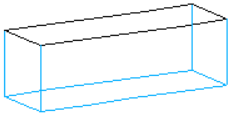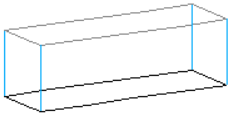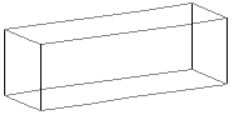Solid Mesh Panel
Use the Solid Mesh panel to create meshes in a pentagonal or hexagonal volume defined with edge lines.
Location: 3D page
- opposite faces
- Define a volume which has a user-defined face definition for two faces of the volume, and four linear faces automatically generated. To define a volume using opposite faces, you must define two regions in space that define two opposing faces of the volume. This is accomplished by specifying lines for region1 and region2 that can be either quadrilateral faces or triangular faces.
- connecting faces
- Define a volume with four faces defined by you and two faces automatically generated. To define a volume using this method, you must define either three connecting lines for a pentagon, or four lines for a hexagon shape.
- all faces
- Define a volume with all six sides defined by the input geometry. The input data required by this function includes two opposing faces defined by using region1 and region2, and the appropriate number of connecting lines. This method is a combination of the previous two methods.
The Uniform Mesh subpanel enables you to specify the number of elements which should be created on three opposite sides of the solid with the three menu items density u =, density v =, and density w =. The lines which correspond to the menu items density u =, density v =, and density w = are highlighted as each becomes active for input.
If connecting lines are not selected, HyperMesh linearly interpolates between the closest endpoints of the lines defining the two surfaces to create the connecting lines.
If connecting lines are selected, but neither surface 1 nor surface 2 lines are selected, HyperMesh linearly interpolates between the endpoints of the connecting lines to create the surface lines.
The tolerance used to verify that the selected lines are intersecting can be modified in the Options panel.
Panel Options
| Option | Action |
|---|---|
| start region | Select three or four
lines that define the first surface of the solid. Figure 1. |
| end region | Select three or four
lines that define the opposing surface of the solid.  Figure 2. |
| connecting | Select three or four
lines connecting the two surfaces.  Figure 3. |
Command Buttons
| Button | Action |
|---|---|
| uniform mesh | Create a uniform mesh
in the volume formed by three, six, or nine lines (penta), or
four, eight, or twelve lines (hexa). If the selected lines form a solid, the Uniform Mesh subpanel is displayed. |
| reject | Revert the most recently made changes. |
| return | Exit the panel. |